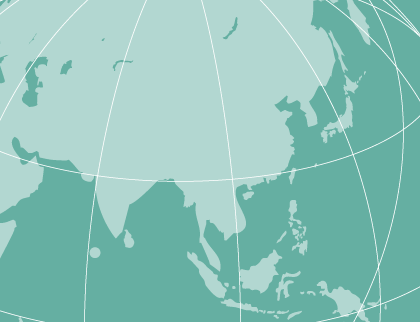Video modules (55 min in total)
Description of the modules
Module 1: Course Introduction: This module discusses the issue of inadequate waste management in developing countries, introduces users to key concepts related to solid waste management, including the 3Rs (reduce, reuse and recycle), and gives a brief introduction to the overall course and each of the topic-specific modules in this series.
- Module 2: What is a Waste Bank? This module gives a basic introduction to the waste bank system. It discusses the concept of waste banks, the history of their development in Indonesia, key benefits that can be achieved at different levels from the individual citizen to nationwide, and how they are positioned in global discussions on resource management and the 3Rs.
- Module 3: How Does a Waste Bank Work? In this module, users learn how the waste bank system works. The content looks in detail at the stages of waste – where it is generated, its journey to the waste bank, and from there to the recycler. Users will also learn about the flow of finances and other benefits to communities and individuals. This module identifies key roles involved in the waste bank system, as well as key factors for successful implementation.
- Module 4: How to Start a Waste Bank? This module explains the 3-step process of establishing a waste bank based on the experiences of a wide range of entities in society, including community-based organisations (CBOs), non-governmental organisations (NGOs), academic institutions (schools and universities) and private businesses in Indonesia. The process follows these three steps: how to approach the community; how to carry out the initial planning and technical training; and how to practically establish the waste bank system. It also points out some key challenges when implementing the system.
- Module 5: Conclusion: This module summarises key points learnt in the previous videos. It also motivates participants to be proactive in establishing waste banks in their local community, city or country, and provides contact details for IGES-CCET in case more information is required.
Module 6: Case Study in Bali, Indonesia: This case study documents the experience of a digital waste bank system in Bali that was initiated by Griya Luhu, a local NGO. It describes how traditional waste bank systems can become more efficient and productive by applying digital technologies, such as a mobile app.
Related documents:
1) Research paper "Moving from Waste to Resource Management: A Case Study of Lake Toba, Indonesia"
Author: Miwa Tatsuno, Premakumara Jagath Dickella Gamaralalage, Kazunobu Onogawa
Link: Moving from Waste to Resource Management: A Case Study of Lake Toba, Indonesia (iges.or.jp)
2) Research paper " Shifting Toward Resource Management in Remote Area: A Case Study of Lake Toba, Indonesia"
Author: Miwa Tatsuno, Premakumara Jagath Dickella Gamaralalage
Link: Shifting Toward Resource Management in Remote Area: A Case Study of Lake Toba, Indonesia | SpringerLink
3) Research article "Transition from Waste Management to Resource Management: A Potential of Waste Bank Program in Indonesian Cities"
Author: Premakumara Jagath Dickella Gamaralalage, Yatsuka Kataoka, Eddy S. Soedjono*, Nurina Fitriani*
(*Department of Environmental Engineering, Institut Teknologi Sepuluh Nopember, Indonesia)
Link: Transition from Waste Management to Resource Management: A Potential of Waste Bank Program in Indonesian Cities (jscimedcentral.com)
Contact Us
If you have any questions or need more information, please contact
IGES Centre Collaborating with UNEP on Environmental Technologies (CCET)
2108-11 Kamiyamaguchi, Hayama, Kanagawa, 240-0115 Japan
e-mail: [email protected]

